A Comparative Analysis of Hazelnuts and Peanuts: Exploring Their Varied Characteristics and Benefits Introduction: Hazelnuts and peanuts are two widely popular nuts that offer a plethora of health benefits and culinary uses. While they belong to different plant families, they share many similarities, such as being rich sources of nutrients, featuring in various culinary preparations, and acting as key ingredients in the production of numerous food products. This article aims to provide a comprehensive overview and comparative analysis of these diverse nuts, exploring their origins, nutritional profiles, culinary applications, and potential health benefits. 1. Origins and Cultivation: 1.1 Hazelnuts: Hazelnuts, also known as filberts, are the fruits of the hazel tree, primarily cultivated in countries such as Turkey, Italy, and the United States. Hazelnut cultivation has a rich history, with Turkey being the largest producer and exporter globally. Varieties of hazelnuts include Tonda di Giffoni, Tonda Gentile, and Barcelona. 1.2 Peanuts: Peanuts, botanically classified as legumes rather than nuts, are grown in warm climates such as the United States, China, India, and Brazil. The peanut plant produces leguminous pods containing one to three seeds. These seeds are referred to as peanuts and are harvested for consumption. Prominent peanut types include Virginia, Spanish, and Valencia. 2. Nutritional Composition: 2.1 Hazelnuts: Hazelnuts are known for their high nutritional value and are a rich source of healthy fats, dietary fiber, vitamins, minerals, and antioxidants. They contain monounsaturated fats, mainly oleic acid, which helps reduce the risk of heart disease. Hazelnuts are also a good source of vitamin E, B vitamins, folate, magnesium, and potassium, all of which contribute to overall health and well-being. 2.2 Peanuts: Peanuts are nutrient-dense legumes, offering a well-balanced combination of macronutrients and micronutrients. They are packed with protein, dietary fiber, healthy fats, vitamins, and minerals. Peanuts are an excellent source of plant-based protein, making them a valuable addition to vegetarian and vegan diets. They also contain phytosterols, which promote heart health. 3. Culinary Applications: 3.1 Hazelnuts: Hazelnuts have a distinct flavor and creamy texture, making them a versatile ingredient in both sweet and savory dishes. They are commonly used in baking, confectionery, desserts, and chocolate production, adding a rich and nutty taste. Hazelnut oil is prized for its delicate flavor and serves as an excellent finishing oil for dressings, sauces, and drizzles, enhancing the taste and aroma of various dishes. 3.2 Peanuts: Peanuts have a unique taste and are widely consumed in various culinary forms. These legumes are frequently enjoyed as a snack in their roasted form or processed into spreads like peanut butter. Peanuts are also used in cooking, adding a delightful crunch and flavor to stir-fries, salads, sauces, and desserts. In many countries, peanuts are the primary ingredient in traditional dishes, such as pad thai in Thailand and satay sauce in Indonesia. 4. Health Benefits: 4.1 Hazelnuts: Consuming hazelnuts can contribute to several health benefits. The monounsaturated fats in hazelnuts help reduce bad cholesterol levels, lower the risk of heart disease, and support overall cardiovascular health. Hazelnuts are also abundant in antioxidants, notably vitamin E, which neutralize harmful free radicals and protect cells from damage. Additionally, hazelnuts provide essential vitamins and minerals that promote brain health, bone strength, and a strong immune system. 4.2 Peanuts: Peanuts offer an array of health benefits due to their nutrient-rich composition. The high protein content aids in maintaining muscle mass, while the fiber content assists in digestion and promotes a feeling of fullness. Peanuts are also rich in antioxidants, helping to reduce inflammation and protect against chronic diseases like heart disease and certain types of cancer. Furthermore, peanuts contain various vitamins and minerals, including biotin, which supports healthy hair and nails, and resveratrol, associated with anti-aging properties. 5. Allergies and Precautions: 5.1 Hazelnuts: Hazelnut allergies are relatively common, particularly among children and individuals with existing allergic conditions. Symptoms of hazelnut allergies may range from mild to severe and include itching, hives, swelling, difficulty breathing, and anaphylaxis. Therefore, it is crucial for individuals with hazelnut allergies to avoid consuming hazelnuts and products containing them. 5.2 Peanuts: Peanut allergies are one of the most prevalent food allergies globally and can cause severe allergic reactions. Consuming peanuts or products containing peanuts can trigger symptoms such as itching, hives, swelling, respiratory problems, and in severe cases, anaphylaxis. People with peanut allergies should strictly avoid peanuts and carefully read labels to prevent accidental exposure. Conclusion: Hazelnuts and peanuts are distinct nuts that offer numerous health benefits and have broad culinary applications. While hazelnuts excel in their rich vitamin E content, diverse antioxidant profile, and culinary versatility, peanuts are renowned for their protein content, high fiber levels, and widespread use in snacks, spreads, and traditional cuisines. Understanding the unique characteristics, nutritional compositions, and potential health benefits of these nuts can assist individuals in incorporating them into a balanced diet and making an informed choice based on their preferences and dietary needs.Title: A Comparative Analysis of Hazelnuts and Peanuts: Exploring Their Varied Characteristics and Benefits 1. Global Production and Market Trends: Hazelnuts: Hazelnuts are primarily cultivated in countries like Turkey, Italy, and the United States. Turkey holds the largest share of global hazelnut production, accounting for approximately 75% of the world’s supply. The demand for hazelnuts has been steadily increasing due to their versatile uses in various food products, such as confectionery, bakery items, spreads, and beverages. The hazelnut market is projected to witness substantial growth owing to rising consumer awareness about their health benefits and the growing popularity of hazelnut-based products. Peanuts: Peanuts are widely grown in warm climates like the United States, China, India, and Brazil. The United States dominates the global peanut market, accounting for the majority of production. Peanuts are consumed in various forms, including roasted nuts, peanut butter, and oil. The peanut market is expected to experience steady growth due to the increased demand for protein-rich food products, vegan alternatives, and the rising popularity of ethnic cuisines that prominently feature peanuts. 2. Value-added Products and Innovation: Hazelnuts: The hazelnut industry has witnessed innovative product development, focusing on value-added offerings. Manufacturers have introduced hazelnut-based spreads, chocolate bars, nut milk, and even hazelnut flour for gluten-free baking. Additionally, hazelnuts are utilized in the production of premium liqueurs, artisanal chocolates, ice cream, and spreads. The versatility of hazelnuts in both sweet and savory applications continues to inspire chefs, bakers, and entrepreneurs to create innovative products and expand the consumer market for hazelnuts. Peanuts: The peanut industry has also embraced innovation, enabling a wide range of value-added products. Peanut butter remains a popular and versatile choice, but manufacturers have also developed new flavors and textures to cater to changing consumer preferences. Peanut-based snacks, such as trail mix, energy bars, and savory roasted peanuts with unique spice blends, have gained considerable popularity. Peanut oil is not only used for cooking but also finds application in the skincare and cosmetics industry due to its nourishing properties. 3. Sustainability and Environmental Impact: Hazelnuts: Hazelnut cultivation has the potential to positively impact the environment. Hazelnut trees are known for their extensive root systems, which help prevent soil erosion and improve water quality. Additionally, hazelnut orchards provide habitats for diverse ecosystems and support biodiversity. Sustainable farming practices, such as integrated pest management and conservation programs, are being adopted in hazelnut production to minimize pesticide use and promote ecological sustainability. Peanuts: Sustainable agriculture practices are essential in peanut farming to minimize environmental impact. These practices include crop rotation, precision irrigation, soil management, and the use of biodegradable mulches. Peanut growers also strive to reduce water usage and lower greenhouse gas emissions by optimizing fertilizer application and employing integrated pest management techniques. The industry continues to focus on implementing sustainable practices to preserve the long-term viability of peanut cultivation. 4. Health and Wellness Trends: Hazelnuts: With the growing interest in plant-based diets and conscious food choices, hazelnuts have gained recognition for their nutritional value and health benefits. They are naturally gluten-free and cholesterol-free, making them suitable for individuals with specific dietary requirements. Hazelnuts’ nutrient profile, including high levels of healthy fats, fiber, and antioxidants, supports heart health, boosts brain function, and promotes overall well-being. As a versatile cooking ingredient, hazelnuts offer health-conscious consumers a nutritious and flavorful option in multiple culinary applications. Peanuts: Peanuts have gained popularity as a healthy and sustainable protein source, particularly in vegetarian and vegan diets. They are rich in essential amino acids, healthy fats, and fiber, promoting satiety and aiding in weight management. Peanuts’ nutritional composition supports muscle growth and repair, maintains blood sugar levels, and reduces the risk of chronic diseases. The peanut industry is capitalizing on these health benefits and positioning peanuts as a nutritious snacking option and ingredient in products catering to the health-conscious consumer market. 5. Market Challenges and Opportunities: Hazelnuts: Despite the increasing demand for hazelnuts, the industry faces several challenges. Hazelnut production is heavily concentrated in specific regions, making it susceptible to climate change and weather-related risks. Pests and diseases, such as Eastern Filbert Blight, pose a significant threat to hazelnut orchards. However, diversification of hazelnut production to other suitable regions and investment in research and development can help overcome these challenges and expand the global hazelnut market. Peanuts: The peanut industry faces challenges related to allergies and allergen-labeling regulations. Peanut allergies are prevalent and can limit consumer choices and market potential. However, manufacturers are working towards developing allergen-free products and enhancing labeling practices to ensure consumer safety. Furthermore, the rise in health-conscious consumer demand for plant-based protein sources presents a significant opportunity for the peanut industry to further expand its market share. Conclusion: Hazelnuts and peanuts offer an array of benefits and are essential ingredients in numerous cuisines and food products worldwide. Hazelnuts are renowned for their distinct flavor, nutritional richness, and versatility in sweet and savory applications. Meanwhile, peanuts are enjoyed for their protein content, widespread use in snacks and spreads, and potential health benefits. As consumer preferences continue to evolve towards healthier and sustainable choices, both the hazelnut and peanut industries have ample opportunities to capitalize on their unique characteristics and cater to the growing demand for these beloved nuts.
nuts
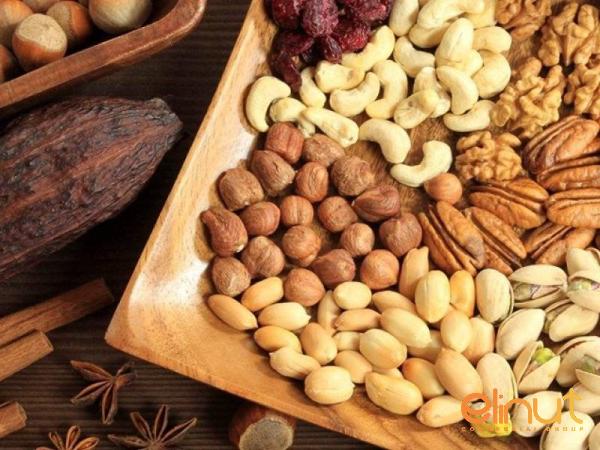 A Comparative Analysis of Hazelnuts and Peanuts: Exploring Their Varied Characteristics and Benefits Introduction: Hazelnuts and peanuts are two widely popular nuts that offer a plethora of health benefits and culinary uses. While they belong to different plant families, they share many similarities, such as being rich sources of nutrients, featuring in various culinary preparations, and acting as key ingredients in the production of numerous food products. This article aims to provide a comprehensive overview and comparative analysis of these diverse nuts, exploring their origins, nutritional profiles, culinary applications, and potential health benefits. 1. Origins and Cultivation: 1.1 Hazelnuts: Hazelnuts, also known as filberts, are the fruits of the hazel tree, primarily cultivated in countries such as Turkey, Italy, and the United States. Hazelnut cultivation has a rich history, with Turkey being the largest producer and exporter globally. Varieties of hazelnuts include Tonda di Giffoni, Tonda Gentile, and Barcelona. 1.2 Peanuts: Peanuts, botanically classified as legumes rather than nuts, are grown in warm climates such as the United States, China, India, and Brazil. The peanut plant produces leguminous pods containing one to three seeds. These seeds are referred to as peanuts and are harvested for consumption. Prominent peanut types include Virginia, Spanish, and Valencia. 2. Nutritional Composition: 2.1 Hazelnuts: Hazelnuts are known for their high nutritional value and are a rich source of healthy fats, dietary fiber, vitamins, minerals, and antioxidants. They contain monounsaturated fats, mainly oleic acid, which helps reduce the risk of heart disease. Hazelnuts are also a good source of vitamin E, B vitamins, folate, magnesium, and potassium, all of which contribute to overall health and well-being. 2.2 Peanuts: Peanuts are nutrient-dense legumes, offering a well-balanced combination of macronutrients and micronutrients. They are packed with protein, dietary fiber, healthy fats, vitamins, and minerals. Peanuts are an excellent source of plant-based protein, making them a valuable addition to vegetarian and vegan diets. They also contain phytosterols, which promote heart health. 3. Culinary Applications: 3.1 Hazelnuts: Hazelnuts have a distinct flavor and creamy texture, making them a versatile ingredient in both sweet and savory dishes. They are commonly used in baking, confectionery, desserts, and chocolate production, adding a rich and nutty taste.
A Comparative Analysis of Hazelnuts and Peanuts: Exploring Their Varied Characteristics and Benefits Introduction: Hazelnuts and peanuts are two widely popular nuts that offer a plethora of health benefits and culinary uses. While they belong to different plant families, they share many similarities, such as being rich sources of nutrients, featuring in various culinary preparations, and acting as key ingredients in the production of numerous food products. This article aims to provide a comprehensive overview and comparative analysis of these diverse nuts, exploring their origins, nutritional profiles, culinary applications, and potential health benefits. 1. Origins and Cultivation: 1.1 Hazelnuts: Hazelnuts, also known as filberts, are the fruits of the hazel tree, primarily cultivated in countries such as Turkey, Italy, and the United States. Hazelnut cultivation has a rich history, with Turkey being the largest producer and exporter globally. Varieties of hazelnuts include Tonda di Giffoni, Tonda Gentile, and Barcelona. 1.2 Peanuts: Peanuts, botanically classified as legumes rather than nuts, are grown in warm climates such as the United States, China, India, and Brazil. The peanut plant produces leguminous pods containing one to three seeds. These seeds are referred to as peanuts and are harvested for consumption. Prominent peanut types include Virginia, Spanish, and Valencia. 2. Nutritional Composition: 2.1 Hazelnuts: Hazelnuts are known for their high nutritional value and are a rich source of healthy fats, dietary fiber, vitamins, minerals, and antioxidants. They contain monounsaturated fats, mainly oleic acid, which helps reduce the risk of heart disease. Hazelnuts are also a good source of vitamin E, B vitamins, folate, magnesium, and potassium, all of which contribute to overall health and well-being. 2.2 Peanuts: Peanuts are nutrient-dense legumes, offering a well-balanced combination of macronutrients and micronutrients. They are packed with protein, dietary fiber, healthy fats, vitamins, and minerals. Peanuts are an excellent source of plant-based protein, making them a valuable addition to vegetarian and vegan diets. They also contain phytosterols, which promote heart health. 3. Culinary Applications: 3.1 Hazelnuts: Hazelnuts have a distinct flavor and creamy texture, making them a versatile ingredient in both sweet and savory dishes. They are commonly used in baking, confectionery, desserts, and chocolate production, adding a rich and nutty taste.
Specifications of nuts
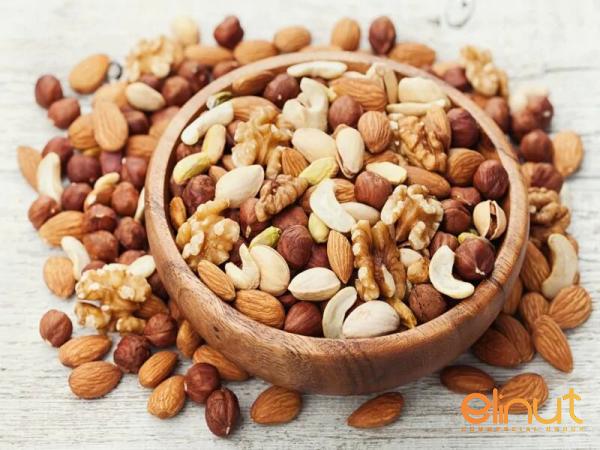 Hazelnut oil is prized for its delicate flavor and serves as an excellent finishing oil for dressings, sauces, and drizzles, enhancing the taste and aroma of various dishes. 3.2 Peanuts: Peanuts have a unique taste and are widely consumed in various culinary forms. These legumes are frequently enjoyed as a snack in their roasted form or processed into spreads like peanut butter. Peanuts are also used in cooking, adding a delightful crunch and flavor to stir-fries, salads, sauces, and desserts. In many countries, peanuts are the primary ingredient in traditional dishes, such as pad thai in Thailand and satay sauce in Indonesia. 4. Health Benefits: 4.1 Hazelnuts: Consuming hazelnuts can contribute to several health benefits. The monounsaturated fats in hazelnuts help reduce bad cholesterol levels, lower the risk of heart disease, and support overall cardiovascular health. Hazelnuts are also abundant in antioxidants, notably vitamin E, which neutralize harmful free radicals and protect cells from damage. Additionally, hazelnuts provide essential vitamins and minerals that promote brain health, bone strength, and a strong immune system. 4.2 Peanuts: Peanuts offer an array of health benefits due to their nutrient-rich composition. The high protein content aids in maintaining muscle mass, while the fiber content assists in digestion and promotes a feeling of fullness. Peanuts are also rich in antioxidants, helping to reduce inflammation and protect against chronic diseases like heart disease and certain types of cancer. Furthermore, peanuts contain various vitamins and minerals, including biotin, which supports healthy hair and nails, and resveratrol, associated with anti-aging properties. 5. Allergies and Precautions: 5.1 Hazelnuts: Hazelnut allergies are relatively common, particularly among children and individuals with existing allergic conditions. Symptoms of hazelnut allergies may range from mild to severe and include itching, hives, swelling, difficulty breathing, and anaphylaxis. Therefore, it is crucial for individuals with hazelnut allergies to avoid consuming hazelnuts and products containing them. 5.2 Peanuts: Peanut allergies are one of the most prevalent food allergies globally and can cause severe allergic reactions. Consuming peanuts or products containing peanuts can trigger symptoms such as itching, hives, swelling, respiratory problems, and in severe cases, anaphylaxis. People with peanut allergies should strictly avoid peanuts and carefully read labels to prevent accidental exposure. Conclusion: Hazelnuts and peanuts are distinct nuts that offer numerous health benefits and have broad culinary applications.
Hazelnut oil is prized for its delicate flavor and serves as an excellent finishing oil for dressings, sauces, and drizzles, enhancing the taste and aroma of various dishes. 3.2 Peanuts: Peanuts have a unique taste and are widely consumed in various culinary forms. These legumes are frequently enjoyed as a snack in their roasted form or processed into spreads like peanut butter. Peanuts are also used in cooking, adding a delightful crunch and flavor to stir-fries, salads, sauces, and desserts. In many countries, peanuts are the primary ingredient in traditional dishes, such as pad thai in Thailand and satay sauce in Indonesia. 4. Health Benefits: 4.1 Hazelnuts: Consuming hazelnuts can contribute to several health benefits. The monounsaturated fats in hazelnuts help reduce bad cholesterol levels, lower the risk of heart disease, and support overall cardiovascular health. Hazelnuts are also abundant in antioxidants, notably vitamin E, which neutralize harmful free radicals and protect cells from damage. Additionally, hazelnuts provide essential vitamins and minerals that promote brain health, bone strength, and a strong immune system. 4.2 Peanuts: Peanuts offer an array of health benefits due to their nutrient-rich composition. The high protein content aids in maintaining muscle mass, while the fiber content assists in digestion and promotes a feeling of fullness. Peanuts are also rich in antioxidants, helping to reduce inflammation and protect against chronic diseases like heart disease and certain types of cancer. Furthermore, peanuts contain various vitamins and minerals, including biotin, which supports healthy hair and nails, and resveratrol, associated with anti-aging properties. 5. Allergies and Precautions: 5.1 Hazelnuts: Hazelnut allergies are relatively common, particularly among children and individuals with existing allergic conditions. Symptoms of hazelnut allergies may range from mild to severe and include itching, hives, swelling, difficulty breathing, and anaphylaxis. Therefore, it is crucial for individuals with hazelnut allergies to avoid consuming hazelnuts and products containing them. 5.2 Peanuts: Peanut allergies are one of the most prevalent food allergies globally and can cause severe allergic reactions. Consuming peanuts or products containing peanuts can trigger symptoms such as itching, hives, swelling, respiratory problems, and in severe cases, anaphylaxis. People with peanut allergies should strictly avoid peanuts and carefully read labels to prevent accidental exposure. Conclusion: Hazelnuts and peanuts are distinct nuts that offer numerous health benefits and have broad culinary applications.
Buy nuts
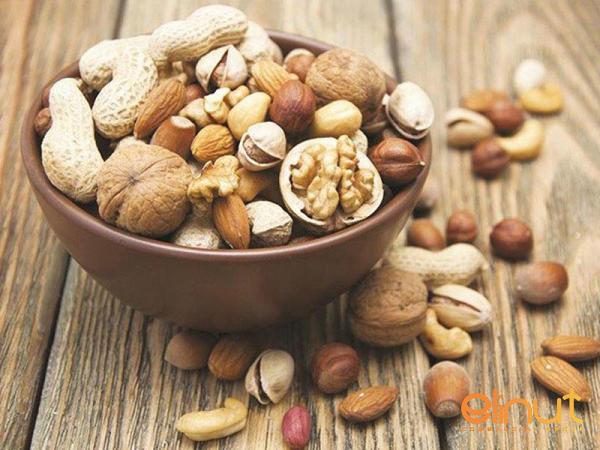 While hazelnuts excel in their rich vitamin E content, diverse antioxidant profile, and culinary versatility, peanuts are renowned for their protein content, high fiber levels, and widespread use in snacks, spreads, and traditional cuisines. Understanding the unique characteristics, nutritional compositions, and potential health benefits of these nuts can assist individuals in incorporating them into a balanced diet and making an informed choice based on their preferences and dietary needs.Title: A Comparative Analysis of Hazelnuts and Peanuts: Exploring Their Varied Characteristics and Benefits 1. Global Production and Market Trends: Hazelnuts: Hazelnuts are primarily cultivated in countries like Turkey, Italy, and the United States. Turkey holds the largest share of global hazelnut production, accounting for approximately 75% of the world’s supply. The demand for hazelnuts has been steadily increasing due to their versatile uses in various food products, such as confectionery, bakery items, spreads, and beverages. The hazelnut market is projected to witness substantial growth owing to rising consumer awareness about their health benefits and the growing popularity of hazelnut-based products. Peanuts: Peanuts are widely grown in warm climates like the United States, China, India, and Brazil. The United States dominates the global peanut market, accounting for the majority of production. Peanuts are consumed in various forms, including roasted nuts, peanut butter, and oil. The peanut market is expected to experience steady growth due to the increased demand for protein-rich food products, vegan alternatives, and the rising popularity of ethnic cuisines that prominently feature peanuts. 2. Value-added Products and Innovation: Hazelnuts: The hazelnut industry has witnessed innovative product development, focusing on value-added offerings. Manufacturers have introduced hazelnut-based spreads, chocolate bars, nut milk, and even hazelnut flour for gluten-free baking. Additionally, hazelnuts are utilized in the production of premium liqueurs, artisanal chocolates, ice cream, and spreads. The versatility of hazelnuts in both sweet and savory applications continues to inspire chefs, bakers, and entrepreneurs to create innovative products and expand the consumer market for hazelnuts. Peanuts: The peanut industry has also embraced innovation, enabling a wide range of value-added products. Peanut butter remains a popular and versatile choice, but manufacturers have also developed new flavors and textures to cater to changing consumer preferences. Peanut-based snacks, such as trail mix, energy bars, and savory roasted peanuts with unique spice blends, have gained considerable popularity. Peanut oil is not only used for cooking but also finds application in the skincare and cosmetics industry due to its nourishing properties. 3. Sustainability and Environmental Impact: Hazelnuts: Hazelnut cultivation has the potential to positively impact the environment. Hazelnut trees are known for their extensive root systems, which help prevent soil erosion and improve water quality.
While hazelnuts excel in their rich vitamin E content, diverse antioxidant profile, and culinary versatility, peanuts are renowned for their protein content, high fiber levels, and widespread use in snacks, spreads, and traditional cuisines. Understanding the unique characteristics, nutritional compositions, and potential health benefits of these nuts can assist individuals in incorporating them into a balanced diet and making an informed choice based on their preferences and dietary needs.Title: A Comparative Analysis of Hazelnuts and Peanuts: Exploring Their Varied Characteristics and Benefits 1. Global Production and Market Trends: Hazelnuts: Hazelnuts are primarily cultivated in countries like Turkey, Italy, and the United States. Turkey holds the largest share of global hazelnut production, accounting for approximately 75% of the world’s supply. The demand for hazelnuts has been steadily increasing due to their versatile uses in various food products, such as confectionery, bakery items, spreads, and beverages. The hazelnut market is projected to witness substantial growth owing to rising consumer awareness about their health benefits and the growing popularity of hazelnut-based products. Peanuts: Peanuts are widely grown in warm climates like the United States, China, India, and Brazil. The United States dominates the global peanut market, accounting for the majority of production. Peanuts are consumed in various forms, including roasted nuts, peanut butter, and oil. The peanut market is expected to experience steady growth due to the increased demand for protein-rich food products, vegan alternatives, and the rising popularity of ethnic cuisines that prominently feature peanuts. 2. Value-added Products and Innovation: Hazelnuts: The hazelnut industry has witnessed innovative product development, focusing on value-added offerings. Manufacturers have introduced hazelnut-based spreads, chocolate bars, nut milk, and even hazelnut flour for gluten-free baking. Additionally, hazelnuts are utilized in the production of premium liqueurs, artisanal chocolates, ice cream, and spreads. The versatility of hazelnuts in both sweet and savory applications continues to inspire chefs, bakers, and entrepreneurs to create innovative products and expand the consumer market for hazelnuts. Peanuts: The peanut industry has also embraced innovation, enabling a wide range of value-added products. Peanut butter remains a popular and versatile choice, but manufacturers have also developed new flavors and textures to cater to changing consumer preferences. Peanut-based snacks, such as trail mix, energy bars, and savory roasted peanuts with unique spice blends, have gained considerable popularity. Peanut oil is not only used for cooking but also finds application in the skincare and cosmetics industry due to its nourishing properties. 3. Sustainability and Environmental Impact: Hazelnuts: Hazelnut cultivation has the potential to positively impact the environment. Hazelnut trees are known for their extensive root systems, which help prevent soil erosion and improve water quality.
nuts + buy and sell
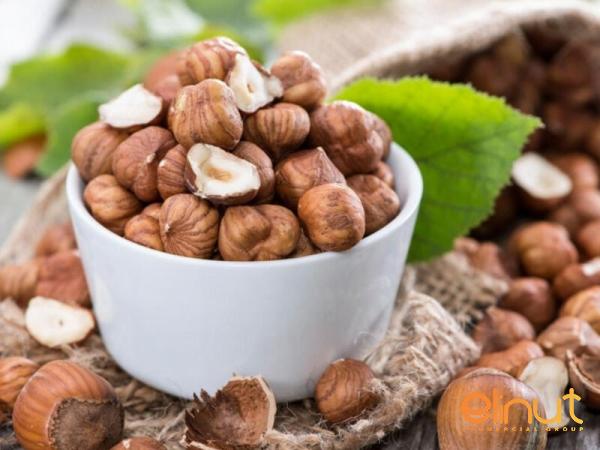 Additionally, hazelnut orchards provide habitats for diverse ecosystems and support biodiversity. Sustainable farming practices, such as integrated pest management and conservation programs, are being adopted in hazelnut production to minimize pesticide use and promote ecological sustainability. Peanuts: Sustainable agriculture practices are essential in peanut farming to minimize environmental impact. These practices include crop rotation, precision irrigation, soil management, and the use of biodegradable mulches. Peanut growers also strive to reduce water usage and lower greenhouse gas emissions by optimizing fertilizer application and employing integrated pest management techniques. The industry continues to focus on implementing sustainable practices to preserve the long-term viability of peanut cultivation. 4. Health and Wellness Trends: Hazelnuts: With the growing interest in plant-based diets and conscious food choices, hazelnuts have gained recognition for their nutritional value and health benefits. They are naturally gluten-free and cholesterol-free, making them suitable for individuals with specific dietary requirements. Hazelnuts’ nutrient profile, including high levels of healthy fats, fiber, and antioxidants, supports heart health, boosts brain function, and promotes overall well-being. As a versatile cooking ingredient, hazelnuts offer health-conscious consumers a nutritious and flavorful option in multiple culinary applications. Peanuts: Peanuts have gained popularity as a healthy and sustainable protein source, particularly in vegetarian and vegan diets. They are rich in essential amino acids, healthy fats, and fiber, promoting satiety and aiding in weight management. Peanuts’ nutritional composition supports muscle growth and repair, maintains blood sugar levels, and reduces the risk of chronic diseases. The peanut industry is capitalizing on these health benefits and positioning peanuts as a nutritious snacking option and ingredient in products catering to the health-conscious consumer market. 5. Market Challenges and Opportunities: Hazelnuts: Despite the increasing demand for hazelnuts, the industry faces several challenges. Hazelnut production is heavily concentrated in specific regions, making it susceptible to climate change and weather-related risks. Pests and diseases, such as Eastern Filbert Blight, pose a significant threat to hazelnut orchards. However, diversification of hazelnut production to other suitable regions and investment in research and development can help overcome these challenges and expand the global hazelnut market. Peanuts: The peanut industry faces challenges related to allergies and allergen-labeling regulations. Peanut allergies are prevalent and can limit consumer choices and market potential. However, manufacturers are working towards developing allergen-free products and enhancing labeling practices to ensure consumer safety. Furthermore, the rise in health-conscious consumer demand for plant-based protein sources presents a significant opportunity for the peanut industry to further expand its market share. Conclusion: Hazelnuts and peanuts offer an array of benefits and are essential ingredients in numerous cuisines and food products worldwide. Hazelnuts are renowned for their distinct flavor, nutritional richness, and versatility in sweet and savory applications. Meanwhile, peanuts are enjoyed for their protein content, widespread use in snacks and spreads, and potential health benefits. As consumer preferences continue to evolve towards healthier and sustainable choices, both the hazelnut and peanut industries have ample opportunities to capitalize on their unique characteristics and cater to the growing demand for these beloved nuts.
Additionally, hazelnut orchards provide habitats for diverse ecosystems and support biodiversity. Sustainable farming practices, such as integrated pest management and conservation programs, are being adopted in hazelnut production to minimize pesticide use and promote ecological sustainability. Peanuts: Sustainable agriculture practices are essential in peanut farming to minimize environmental impact. These practices include crop rotation, precision irrigation, soil management, and the use of biodegradable mulches. Peanut growers also strive to reduce water usage and lower greenhouse gas emissions by optimizing fertilizer application and employing integrated pest management techniques. The industry continues to focus on implementing sustainable practices to preserve the long-term viability of peanut cultivation. 4. Health and Wellness Trends: Hazelnuts: With the growing interest in plant-based diets and conscious food choices, hazelnuts have gained recognition for their nutritional value and health benefits. They are naturally gluten-free and cholesterol-free, making them suitable for individuals with specific dietary requirements. Hazelnuts’ nutrient profile, including high levels of healthy fats, fiber, and antioxidants, supports heart health, boosts brain function, and promotes overall well-being. As a versatile cooking ingredient, hazelnuts offer health-conscious consumers a nutritious and flavorful option in multiple culinary applications. Peanuts: Peanuts have gained popularity as a healthy and sustainable protein source, particularly in vegetarian and vegan diets. They are rich in essential amino acids, healthy fats, and fiber, promoting satiety and aiding in weight management. Peanuts’ nutritional composition supports muscle growth and repair, maintains blood sugar levels, and reduces the risk of chronic diseases. The peanut industry is capitalizing on these health benefits and positioning peanuts as a nutritious snacking option and ingredient in products catering to the health-conscious consumer market. 5. Market Challenges and Opportunities: Hazelnuts: Despite the increasing demand for hazelnuts, the industry faces several challenges. Hazelnut production is heavily concentrated in specific regions, making it susceptible to climate change and weather-related risks. Pests and diseases, such as Eastern Filbert Blight, pose a significant threat to hazelnut orchards. However, diversification of hazelnut production to other suitable regions and investment in research and development can help overcome these challenges and expand the global hazelnut market. Peanuts: The peanut industry faces challenges related to allergies and allergen-labeling regulations. Peanut allergies are prevalent and can limit consumer choices and market potential. However, manufacturers are working towards developing allergen-free products and enhancing labeling practices to ensure consumer safety. Furthermore, the rise in health-conscious consumer demand for plant-based protein sources presents a significant opportunity for the peanut industry to further expand its market share. Conclusion: Hazelnuts and peanuts offer an array of benefits and are essential ingredients in numerous cuisines and food products worldwide. Hazelnuts are renowned for their distinct flavor, nutritional richness, and versatility in sweet and savory applications. Meanwhile, peanuts are enjoyed for their protein content, widespread use in snacks and spreads, and potential health benefits. As consumer preferences continue to evolve towards healthier and sustainable choices, both the hazelnut and peanut industries have ample opportunities to capitalize on their unique characteristics and cater to the growing demand for these beloved nuts.



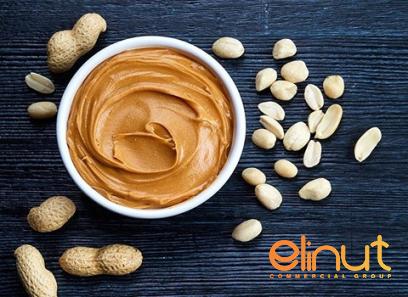

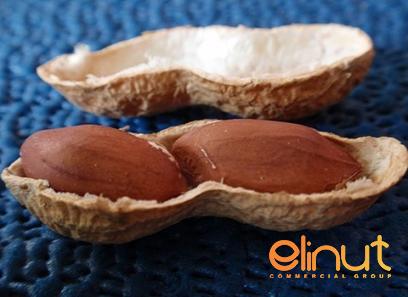
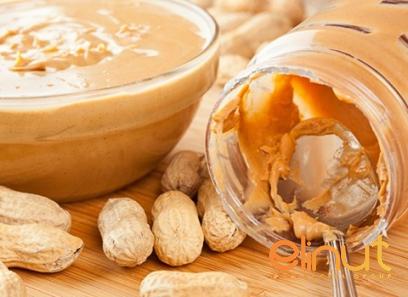
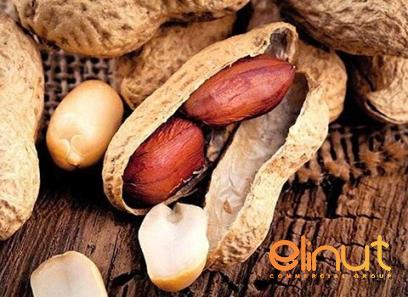
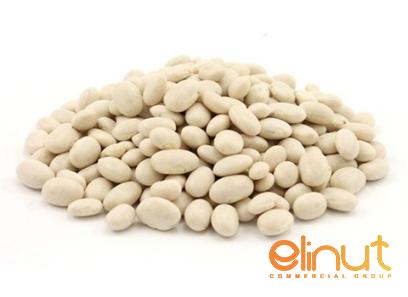

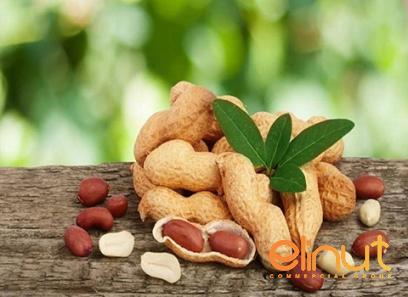
Your comment submitted.